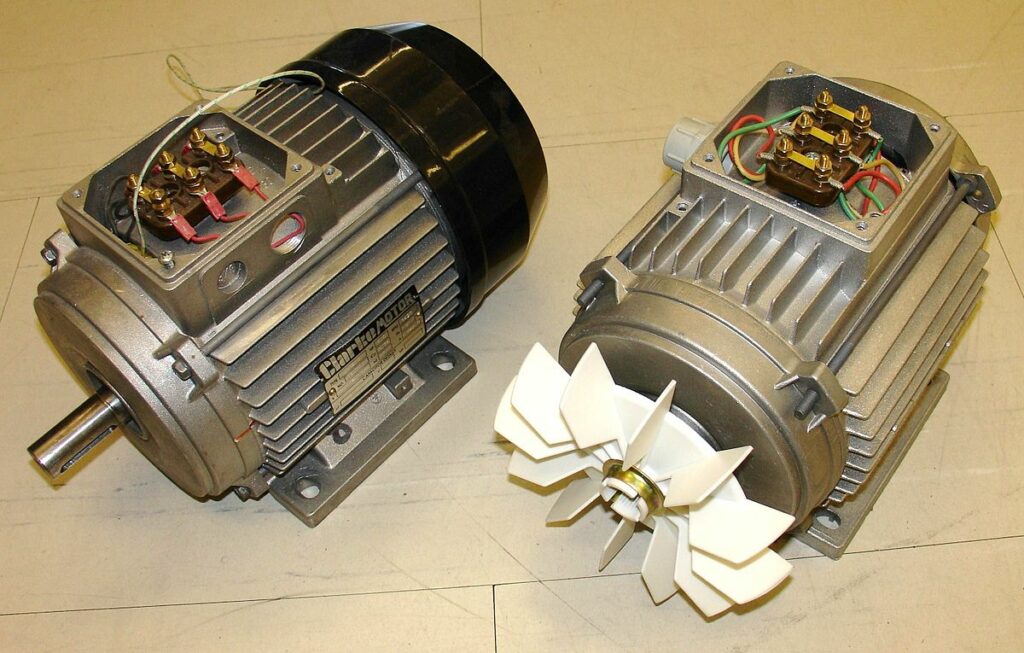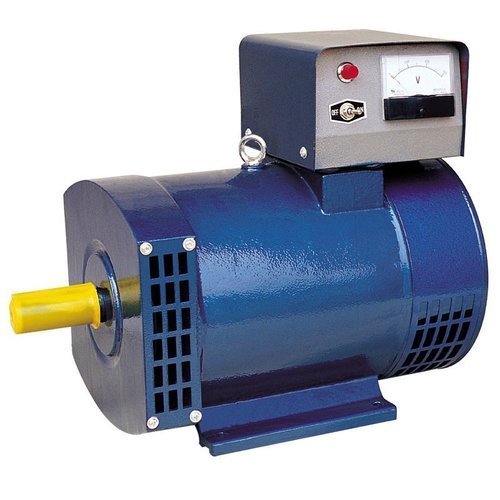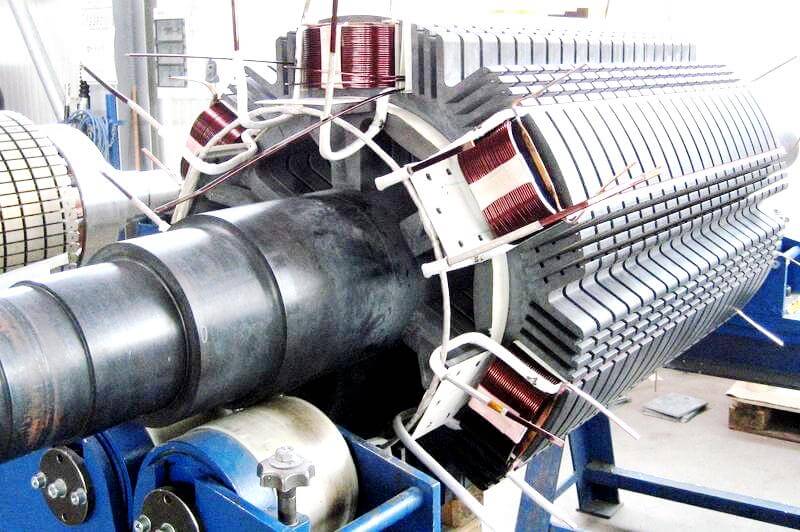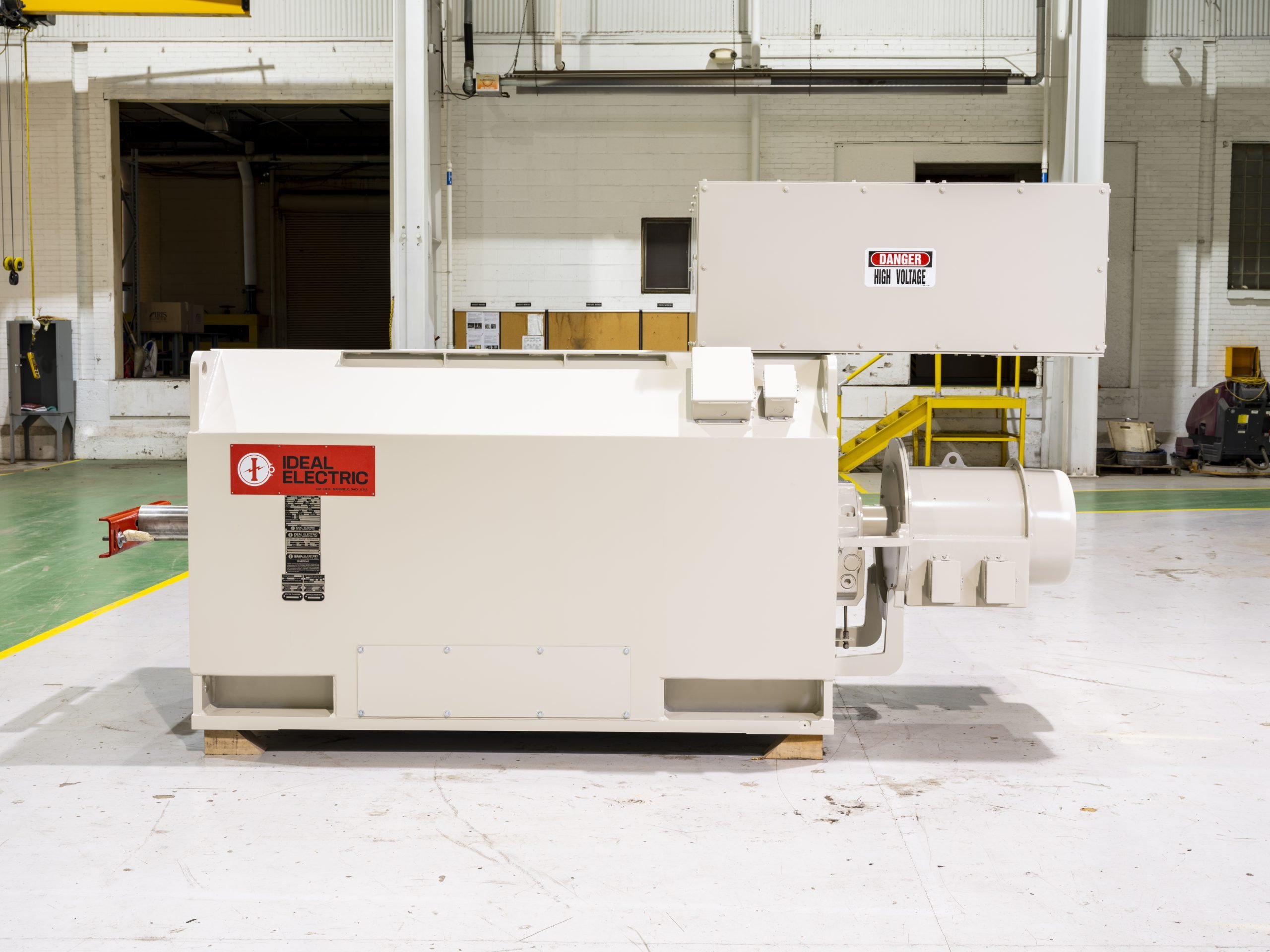Welcome to Linquip Blog. Today and in this article, we make a comparison between the induction generator and synchronous generator. As you may know, AC machines can be further classified as Induction machines and Synchronous machines. And hence, AC generators as Synchronous generators that are commonly referred to as alternators, and Induction generators, or as they are called asynchronous generators.
In this article, we will discuss each of these generators separately and compare their specifications to make it clear how they differ. So as usual and firstly, we need to have a definition of each of these generators. After we make it clear what they are, we need to move to the next section to show how they work. In the two last sections, we will consider the differences and elaborate on how they differ economically.
Our team gathered all of the necessary information on this topic to eliminate the need for reading diverse content on other websites. Stay with us until the end to find the answer to your question on this topic. There are significant differences between operating principles and the construction of synchronous and induction machines. For now, let us discuss the differences between the synchronous generator and the induction generator.
What Is a Synchronous Generator?
A synchronous generator is an alternator with the same rotor speed as the rotating magnetic field of the stator. According to the structure, it can be divided into two types: a rotating armature and a rotating magnetic field. Synchronous generators are one of the most commonly used alternators. In the modern power industry, it is widely used in hydropower, thermal power, nuclear power, and diesel power generation.
What Is an Induction Generator?
An induction generator is an alternator that utilizes an air gap rotating magnetic field between a stator and a rotor to interact with an induced current in a rotor winding. They are usually referred to as asynchronous generators. The speed is slightly higher than the synchronous speed. The output power increases or decreases with the slip rate. It can be excited by the power grid or self-excited with a power capacitor.
How Does an Induction Generator Work?
In the previous section, we gave you two simple definitions of what induction and synchronous generators are. In the following, we will show you how these two generators work differently.
An induction generator produces electrical power when its rotor is turned faster than the synchronous speed. For a typical four-pole motor where there are two pairs of poles on a stator operating on a 60 Hz electrical grid, the synchronous speed is 1800 rotations per minute. The same four-pole motor operating on a 50 Hz grid will have a synchronous speed of 1500 rotations per minute. The motor normally turns slightly slower than the synchronous speed; the difference between synchronous and operating speed, as you may know, is called slip and is usually expressed as a percent of the synchronous speed. For example, a motor operating at 1450 rotations per minute that has a synchronous speed of 1500 RPM is running at a slip of +3.3%.
In normal motor operation, the stator flux rotation is faster than the rotor rotation. This causes the stator flux to induce rotor currents, which make a rotor flux with magnetic polarity opposite to the stator. In this way, the rotor is dragged along behind stator flux, with the currents in the rotor induced at the slip frequency.
In generator operation, a prime mover such as a turbine or any kind of engine drives the rotor above the synchronous speed (negative slip). The stator flux still induces currents in the rotor, but since the opposing rotor flux is now cutting the stator coils, an active current is produced in stator coils and the motor now operates as a generator, sending power back to the electrical grid.
How Does a Synchronous Generator Work?
The synchronous generator working principle is the same as a DC generator. It uses Faraday’s law of electromagnetic induction. This law states that when the flow of current is induced within the conductor in a magnetic field then there will be a relative motion among the conductor as well as the magnetic field. In a synchronous generator, the magnetic field is immobile & conductors will rotate. However, in practical construction, armature conductors are motionless & field magnets will rotate between them.
The rotor in the synchronous generator can be fixed mechanically toward the shaft to turn at synchronous speed under some mechanical force which consequences in magnetic flux cutting in the stationary armature conductors of the stator. Due to this direct flux cutting result, an induced emf and flow of current will be there in armature conductors. For each winding, there will be a current flow in the first half cycle after that in the second half cycle with a specific time lag of 120°.
Three Main Differences between Induction Generator vs. Synchronous Generator
Now that you know how induction and synchronous generators work, let’s be a little more specific about the differences between the two types of generators. In the following, you will learn more about three of the most important differences between these two generators.
1. In a synchronous generator, the waveform of the generated voltage is synchronized and directly corresponds to the rotor speed. The frequency of output can be given as f = N * P / 120 Hz. where N is the speed of the rotor in rpm and P is the number of poles.
In the case of induction generators, the output voltage frequency is regulated by the power system to which the induction generator is connected. If the induction generator is supplying a standalone load, the output frequency will be slightly lower (by 2 or 3%) calculated from the formula f = N * P / 120.
2. Separate DC excitation system is required in an alternator or synchronous generator while an Induction generator takes reactive power from the power system for field excitation. If an induction generator is meant to supply a standalone load, a capacitor bank needs to be connected to supply reactive power.
3. Construction of an induction generator is less complicated as it does not require brushes and slip ring arrangement. Brushes are required in the synchronous generator to supply DC voltage to the rotor for excitation.
Economical Comparison Between Induction Generator vs. Synchronous Generator
Here we come to the last part of this article. Where we will examine the differences between the two generators in terms of economic efficiency.
- The power station equipped with asynchronous generators has a low investment cost because of the lack of a DC excitation system and synchronous devices. Moreover, Since there is no collector ring, brush, and rotor excitation winding, maintenance and operation costs are low.
- The asynchronous generator rotor is a rotor winding similar to the hidden pole and the non-synchronous generator. Therefore, the general efficiency is higher than that of the synchronous generator with the same capacity and the same speed. Under the same water source, the asynchronous generator can generate more power.
- The above economic advantages of asynchronous generators will be partially offset by the required excitation or additional synchronous capacity or additional capacitors of the asynchronous generator.
- The magnitude of the excitation required for the asynchronous generator is inversely proportional to the rated speed of the motor. The higher the speed, the lower the excitation of the target value.
- The area of the asynchronous generator power plant is smaller than that of the synchronous generator power plant.
Conclusion
In this article, we tried to provide all the essential information about the differences between induction generators vs. synchronous generators. we brought the basic definition of what induction and synchronous generators are and then we moved to the working principles of each of these generators. In the next sections, we had some comparisons between these two generators to show how they are different. at last, we examined the differences between the two generators in terms of economic efficiency.
If you have any experience using either of these two generators and know more about them, we will be very glad to have your opinions in the comments on our website Linquip. Moreover, if you have any questions about this topic, you can sign up on our website and wait for our experts to answer your questions. Hope you enjoyed reading this article.
Buy Equipment or Ask for a Service
By using Linquip RFQ Service, you can expect to receive quotations from various suppliers across multiple industries and regions.
Click Here to Request a Quotation From Suppliers and Service Providers
Read More on Linquip
- What Is an Induction Generator? An Ultimate Guide
- Synchronization of Generators: Step-by-Step Guide + PDF\
- Portable vs. Standby Generator (Best Choose for Home in 2022)
- Portable vs. Standby Generator (Best Choose for Home in 2022)
- Electric Generator Maintenance, Repair, and Services (2022 Guide)
- Gasoline Generator Repair and Maintenance (2022 Guide)
- DC Generator Repair, Maintenance & Testing 2022 (Full Guide)
- Pros and Cons of Inverter Generators in 2022
- The 5 Best Propane Generators in 2022
- The 9 Best RV Generators in 2022 (Clear Guide)
- The 10 Best Ozone Generators in 2022 (Ultimate Guide)
- The 3 Best Portable Power Station Generators in 2022 +Pros & Cons








This article is very insightful, I never knew the differences between induction and synchronous generators before now. Thanks so much for the enlightenment.